11 Best first-time Europe itineraries for 1, 2, or 3 weeks
Europe is going to be very busy in the summer of 2024 as the world is back to normal and travel demand is higher than ever. One other key factor is that most European currencies are still hovering at lower levels historically compared to the US dollar, which means that Europe will feel somewhat cheap again this year. In fact, according to our World Backpacker Index, European cities like Lisbon, Madrid, and Munich are about 30% cheaper to visit than Boston, Chicago, and New York City. In other words, flying to Europe might seem expensive, but most things will be cheaper once you get there compared to the costs of visiting a large US city.
Below you’ll find 11 of the most popular and best itineraries for a first visit to Europe. Your first visit is not really the time to be different or creative, and the famous destinations tend to be popular for a reason. In other words, it’s kind of silly to visit, say, Bulgaria, if you’ve not yet been to France or Italy. I lay out the best options along with how long to stay in each place as a general guide. I also discuss Mediterranean cruises, which can actually be an amazing way to see a lot of Europe on your first visit, especially if you don’t like going back and forth to train stations and airports every 2 or 3 days.
For a bit of fun you might be interested in the cheapest 5-star hotels in Europe, which start at US$80 per night for really nice hotels. It helps show that if you choose some of the cheaper cities, you can treat yourself to some luxury that you can’t afford in most other places.
This article was last updated in March, 2024.
There are 11 starter itineraries described in detail below
- Classic London and Paris
- England and Scotland
- Paris and Italy
- Mediterranean cruise
- France, Belgium, and Netherlands
- Paris and elsewhere in France
- Italy
- Spain
- Germany
- Switzerland
- Best of cheap eastern Europe
For each itinerary there are suggestions of other destinations that are easy to add on to the main cities.
Note: This article was most recently updated in March, 2024
Building the best itinerary for your first trip to Europe
Below there are 11 popular itineraries for one week in Europe. If you’ve only got a week then choose one of them and assume you’ll return again to conquer more of this amazing part of the world. If you’ve got more time then you can choose from some of the top add-on suggestions for each one.
Start in the most famous cities
Your first visit to Europe is no time to try to be different or edgy. I recommend that you focus on these 5 great cities before you start branching out into cheaper or more obscure places.
Keep your travel days to a minimum
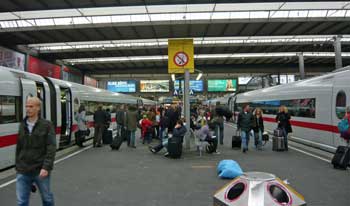
Spend 3 (or 4) nights in almost every major city
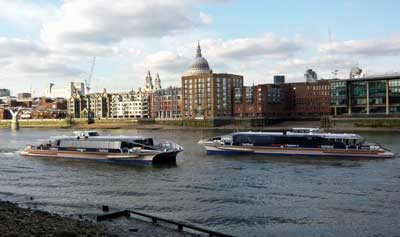
So many first-time visitors are initially planning on spending only 1 or 2 nights in major cities that I wrote a detailed explanation of why 3 nights is ideal for almost all European cities, even if you want to see as much as possible.
3 (or 4) nights will be enough for any city on your first trip
Most first-time visitors are tempted to move too quickly, but it can also be a mistake to move too slowly. It’s really amazing how much you can see in two full sightseeing days. If you spend too long in one city you’ll end up seeing things that are way down your list, while you could be in another city seeing things at the top of your list there.
Choose cities that are easy to reach from each other
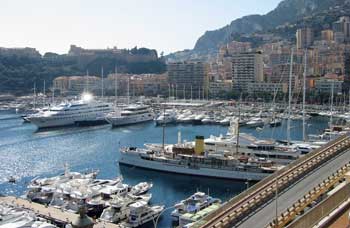
For your first trip it’s best to visit cities that are no more than a 5-hour train ride apart.
Choose cities that are connected by reasonable train rides rather than flights
To build on the point above, finding cheap flights within Europe is easy, but train travel is about a million times more enjoyable and less stressful. You’ll enjoy the train rides almost as much as the cities, so focus on places that are within 5 hours of each other by train.
Start with one of the classic itineraries below, and then add to it if you have more time
If you only have 7 days then you’ll find a list below of classic itineraries that are well-suited to a first visit to Europe. Hopefully you have more than 7 days though, and if you do you can add in one or more of the suggested add-on cities to build an itinerary that appeals most to you.
Best 1-week itineraries for the first time in Europe
Itinerary 1: Classic London and Paris
Fly into either city and take the 2-hour Eurostar train between them
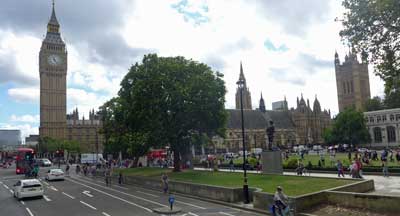
London highlights
- Big Ben and Parliament
- Westminster Abbey and St. Paul’s Cathedral
- Tower of London and Tower Bridge
- West End shows (Broadway equivalent) and classic pubs
- Buckingham Palace and Windsor Castle
Paris is actually far more beautiful than London and the food is famously much better as well. Since Paris gets so many tourists from non-French speaking countries, it’s easy to get by on just English, and the Metro system makes it fast and easy to get around. The architecture of both cities is amazing from the Tower of London, Big Ben, Westminster Abbey to the Louvre and the Eiffel Tower. These cities each pack a huge punch and they are very different from each other as well. Actually, England is arguably the best choice for your first trip to Europe.
Paris highlights
- Eiffel Tower
- Louvre Museum and Museum de Orsay
- Arc de Triomphe and other monuments
- Montmartre neighborhood and Sacré Coeur Cathedral
- Probably the world’s best affordable restaurants and wine
Best add-ons to London and Paris
- Edinburgh (2 or 3 nights, from London)
- Amsterdam (2 or 3 nights, from Paris)
- Bruges and Brussels (2 nights, from Paris)
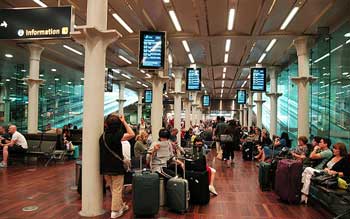
>>>Best one-week London and Paris itinerary in detail
>>>Check London hotel deals
>>>Check Paris hotel deals
Itinerary 2: England and Scotland
- London (3 or 4 nights)
- York (1 night)
- Edinburgh, Scotland (2 or 3 nights)
- Inverness, Scotland (2 or 3 nights)
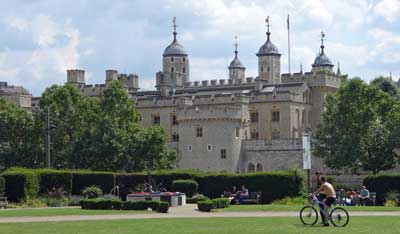
York is a small Roman city with intact city walls and one of the most famous cathedrals in Europe. Edinburgh is not only the capital of Scotland, but it’s easily the second most interesting city in all of Britain. If your time is short, skip York and spend more time in Edinburgh.
If you prefer to focus on the south of England on your first trip then the best option is to go to Bath or nearby Bristol after London. Bath is another of England’s top destinations and it’s a gorgeous city that has been a spa resort for many centuries. It’s also reasonably close to Stonehenge. You can also easily get to Cornwall in England’s southwest corner from Bath, and that’s a whole different and fascinating experience (with nicer weather than up north).
If you’ve got more than a week and want to spend more time in Scotland, especially in the summer months, the place to head to is Inverness. It’s a small town that is considered the gateway to the Scottish Highlands, but it’s an interesting and charming place on its own. You can take day-trips by bus to the highlights of the Highlands including the Isle of Skye and Loch Ness. Between you and me, it’s better to minimize time in Loch Ness or skip it altogether because it’s not one of the more photogenic parts of Scotland and the monster has always been a hoax.
Travel times between the recommended places
- London to York by train: 2 hours
- York to Edinburgh by train: 2.5 hours
- London to Edinburgh by train: 4 hours
- Edinburgh to Inverness by train: 3.5 hours
- London to Bath by train: 85 minutes
Best add-ons to England and Scotland
If you think you want to spend your whole trip in Britain you should have a look at our article on the best itineraries in England, Scotland, and Wales.
>>>Check London hotel deals
>>>Check Edinburgh hotel deals
Itinerary 3: Paris and Italy
- Paris (3 or 4 nights)
- Venice (1 night)
- Florence (2 or 3 nights)
- Rome (3 nights)
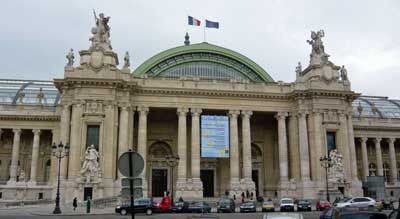
From Paris you can easily fly to Venice (or nearby Treviso) where you should try to spend about 24 hours. Venice is small enough to see in a full day, and so crowded that most people are satisfied to leave after that day. The key is to stay in the main part of the main island so you can enjoy Venice before the cruise passengers and day-trippers arrive, and also after they leave for the day. Two nights in Venice would not be wasted time, and it’s possibly the most gorgeous city in the entire world, but you can see the best of it in a bit over 24 hours.
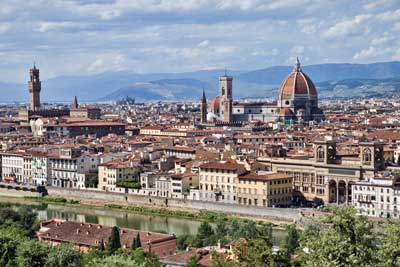
Rome also lives up to the hype and spending a day in the Vatican City will be a highlight even for non-Catholics, but it’s also a crowded and busy city so three days is usually enough for most people. Similar to Paris, Rome is an unusually beautiful city from almost any angle when you are in the historical center. You’ll walk through a stunning piazza (town square) and then turn a corner and you’ll see gorgeous buildings or public statues that are as nice as anything in the museums. Seriously, it’s worth a visit.
Paris to Venice flight: 1 hour 35 minutes
Venice to Florence by train: 1 hour 53 minutes
Florence to Rome by train: 1 hour 16 minutes
You can of course instead fly from Paris to Rome and then go north to Florence and then to Venice and fly home (or back to Paris) from there, and it would be just as enjoyable.
Best add-ons to Paris and Italy
France
- Nice/Cannes/Monaco (2 or 3 nights)
- Avignon (2 nights)
- Bourges (2 nights)
- Bordeaux (2 nights)
- Aix-en-Provence (2 nights)
- Reims (2 nights)
- Dijon/Burgundy (2 nights)
Italy
- Milan (1 or 2 nights)
- Lake Como (2 nights)
- Siena (2 nights)
- Cinque Terre (1 night)
- Naples/Sorrento/Amalfi Coast/Pompeii/Capri (3 to 5 nights)
- Sicily (3 to 4 nights)
>>>Much more information in this article about the best France and Italy itineraries
>>>Check Paris hotel deals
>>>Check Venice hotel deals
>>>Check Florence hotel deals
>>>Check Rome hotel deals
Itinerary 4: Mediterranean cruise
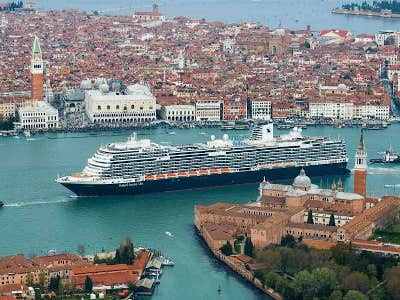
In spite of the reputation of cruises to be floating buffets, they can actually be an excellent way to visit a great number of amazing European cities in a short time. The ship typically is in port from the early morning until mid evening, often giving you the opportunity to have dinner in the city (unlike Caribbean cruises). Better still, the cruise ports are often near the center of town, so you can just walk off the ship and do sightseeing on foot or by public transportation.
Mediterranean cruises usually start at 7 nights but can go up to 3 weeks, which can provide an amazing tour of the entire region without having to pack and repack your bags more than once. They also can provide excellent value, especially compared to the price of taking trains or flights and finding new hotels in every destination.
Most popular Mediterranean departure ports
Barcelona, Spain – It’s an easy port to reach. Ships generally go from Barcelona with stops in France and then Italy.
Rome (Civitavecchia), Italy – The port isn’t very close to Rome, but it’s easy to get back and forth. Ships go west to France and Spain as well as south around the tip of Italy and then on to Croatia, Venice, and to Greece.
Venice, Italy – The cruise ships no longer dock close to the best tourist areas, but it’s easy enough to visit Venice for a day or two before boarding a ship. Ships starting in Venice go south and then head west and to Rome and then to France, or they go south to Croatia and then head east to Greece.
Athens, Greece – The cruise port of Piraeus is just south of Athens and easy to reach. Ships from Athens usually head west towards Croatia, Italy, France, and Spain, but there are also ships that visit Greek islands and Turkey.
>>>Check for deals on Mediterranean cruises
Alternative to consider: a river cruise
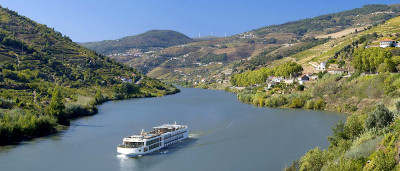
Amsterdam, Budapest, and Prague are some of the most popular river cruise ports, but there are dozens of others including many smaller towns in France where few other tourists will be when you stroll off the ship. There is little or no entertainment on the river cruise ships, but passengers don’t miss it because the entire day and into the evening is spent just steps from local cultural offerings and restaurants.
>>>Check for Europe and river cruise deals
Itinerary 5: France, Belgium, and Netherlands
Paris to Brussels: 1 hour 22 minutes
Brussels to Bruge: 58 minutes
Bruges to Amsterdam: 2 hours 45 minutes
Amsterdam to Paris: 3 hours 17 minutes
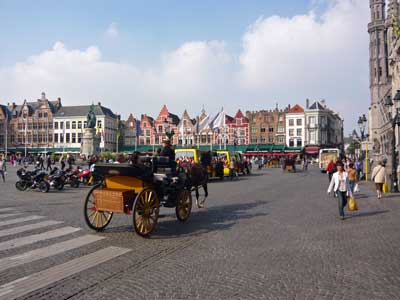
Spending 4 nights in Paris and 3 nights in Amsterdam would be a great trip, but if you want to see something else you’ve got a couple options in between. My advice is to spend an afternoon looking around the Grand Place (main square) in Brussels and then hop a 58-minute train ride to Bruges for a night or two. Brussels isn’t a great tourist city, but Bruges really is so it’s a better option for most people. Whatever you choose out of this group, you can be back in Paris on another high-speed train for your flight home.
Best add-ons to France, Belgium, and Netherlands
- Luxembourg City (1 or 2 nights)
- Cologne, Germany (1 or 2 nights)
- London (3 or 4 nights)
- Interlaken, Switzerland (2 or 3 nights)
>>>Check Paris hotel deals
>>>Check Bruges hotel deals
>>>Check Amsterdam hotel deals
Itinerary 6: Paris and elsewhere in France
- Paris (3 or 4 nights)
And a choice of:
- Nice/Cannes/Monaco (2 or 3 nights)
- Avignon (2 nights)
- Bourges (2 nights)
- Bordeaux (2 nights)
- Aix-en-Provence (2 nights)
- Reims (2 nights)
- Dijon/Burgundy (2 nights)
- Normandy (2 nights)

While Nice is a wonderful tourist city for a look at the French Riviera, the other larger cities of Lyon and Marseilles are probably better saved for a future trip because they are light on key sights compared to many smaller towns. Wine lovers can rent a car or take trains into Bordeaux or Burgundy. Since you can get between most of these towns by train in 2 hours or less, spending only 2 nights in each one is a reasonable option if you want to see a lot in a short time.
Normandy is an interesting choice and easy to reach in only about two hours by train from Paris. Some visitors like to see the famous WWII beaches and memorials, while others (especially in summer) like to check out one or more of the beach-resort towns. Deauville is one of the more famous of those, and it’s also famous for its horse race track and as one of the epicenters of the industry in Europe.
Best add-ons to Paris and elsewhere
- More France, of course
- London (3 or 4 nights)
- Interlaken, Switzerland (2 or 3 nights)
- Amsterdam (2 or 3 nights)
>>>Check Paris hotel deals
>>>Check Nice hotel deals
Itinerary 7: Italy
Rome to Florence: 1 hour 16 minutes
Florence to Venice: 1 hour 53 minutes
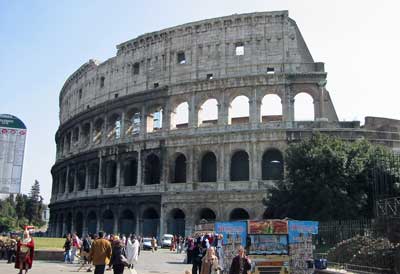
Venice is small enough that you can see the main sights in about 24 hours, and it’s so insanely crowded that many people tire of it after about a day as well. It’s better to pay more for a hotel to be on the main island and visit quickly than to save money with a hotel on the mainland where you’ll be in crowds going back and forth as well. Florence is the most relaxing of the 3, and also a great base for side trips to Pisa, Siena, and Cinque Terre, just to name a few.
Going to Italy? Here are the best first-time Italy itineraries for 3 days to 2 weeks (in much greater detail)
Best add-ons to Italy
- Milan (1 or 2 nights)
- Lake Como (2 nights)
- Siena (2 nights)
- Cinque Terre (1 night)
- Naples/Sorrento/Amalfi Coast/Pompeii/Capri (3 to 5 nights)
- Sicily (3 to 4 nights)
>>>Check Rome hotel deals
>>>Check Florence hotel deals
>>>Check Venice hotel deals
Itinerary 8: Spain
Madrid to Barcelona: 2 hours 30 minutes
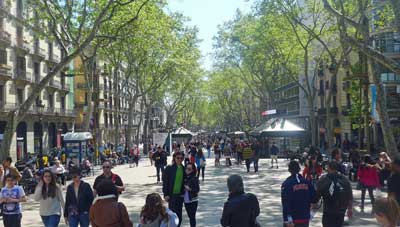
A huge part of Spain’s tourism industry is built around its southern beaches and islands such as Ibiza, Mallorca, and Tenerife (in the Canary Islands). For most people it’s best to ignore those places on your first trip because none of the beaches are special enough to spend days on them compared to the culture of the cities.
Best add-ons to Spain
By popular demand, I’ve added a full article on where to go in Spain with itineraries from 7 to 10 days up to two weeks.
>>>Check Madrid hotel deals
>>>Check Barcelona hotel deals
>>>Check Lisbon hotel deals
Itinerary 9: Germany
Berlin to Munich: 6 hours 2 minutes
Munich to Rothenburg ob der Tauber: 2 hours 56 minutes
Munich to Füssen: 2 hours 4 minutes
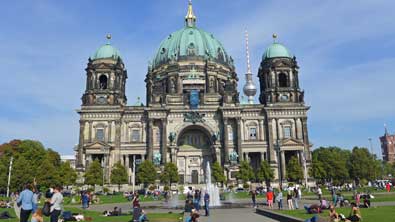
Those two cities are the keys to a Germany visit, and after that you’ve got a wide variety of choices. I cover most of the popular choices in my article on where to go in Germany, which covers several smaller towns that are major highlights.
Best add-ons to Germany
- Cologne (1 or 2 nights)
- Hamburg (2 or 3 nights)
- Amsterdam (3 nights)
- Prague (3 nights)
- Salzburg (2 or 3 nights)
- Vienna (3 nights)
- Interlaken, Switzerland (3 nights)
- Lucerne, Switzerland (2 or 3 nights)
>>>Check Berlin hotel deals
>>>Check Munich hotel deals
Itinerary 10: Switzerland
- Interlaken (3 nights)
- Bern (1 night)
- Lucerne (3 nights)
Zurich Airport to Interlaken: 2 hours 10 minutes
Interlaken to Bern: 53 minutes
Bern to Lucerne: 1 hour 50 minutes
Lucerne to Zurich Airport: 1 hour 3 minutes
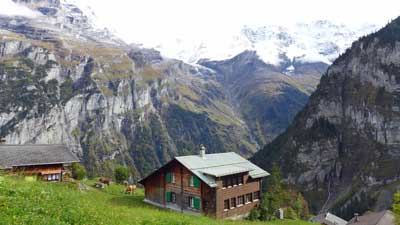
Interlaken is the best hub for the most dramatic Alps views and experiences. The one-hour cable car ride up to the Schilthorn observation deck is something you’ll never forget, and the only thing that might be more dramatic is the train ride up to the Jungfraujoch station, which is the highest in Europe. Lucerne is almost as beautiful with a scenic lake at its heart and also great mountaintop views nearby. If you do want to see a Swiss city then the capital of Bern is the most interesting and photogenic on a short visit. Read more about where to go in Switzerland for even more ideas.
Best add-ons to Switzerland
>>>Check Interlaken hotel deals
>>>Check Lucerne hotel deals
Itinerary 11: Eastern Europe’s best cheap cities
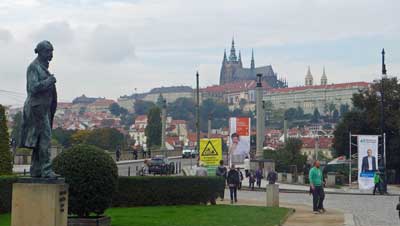
Each of these cities is beautiful and historic, but English is less widely spoken so they can also be quite a bit more challenging for a first-time visitor. Another difficulty is that the trains between them are still quite slow compared to the high-speed rail in the West, so it takes most of a day from one to another, and a bus is often a better choice. I cover this best cheap Europe itinerary more fully in the linked article.
Prague to Budapest: 6 hours 41 minutes
Budapest to Krakow: 9 hours 54 minutes (flying might be better)
Best add-ons to cheap Eastern Europe
- Cesky Krumlov, Czechia (2 nights)
- Ljubljana, Slovenia (2 or 3 nights)
- Split, Croatia (3 nights)
- Belgrade, Serbia (2 or 3 nights)
- Sarajevo, Bosnia and Herzegovina (2 or 3 nights)
- Sofia, Bulgaria (2 or 3 nights)
>>>Check Prague hotel deals
>>>Check Budapest hotel deals
>>>Check Krakow hotel deals


Thanks Roger – you have been extremely helpful.
So our rough itinerary looks as below:
London – 3 nights
Train to Paris
Paris – 3 nights
Train to Switzerland (debating between Lucerne and Interlaken still?)
Either destination in Swiss – 2 nights
Train to Florence
Florence – 3 nights (still to decide if we want to spend a day in Venice or not)
Train to Rome
Rome – 3 nights
Flight back home
Does this sound reasonable and hopefully not too rushed?
Also is it easy to travel via train (routes above) with luggage – as we will be a family of 4, plus given the weather (need coats and woolens, etc.), we will have reasonably big suitcases (atleast a couple plus backpacs, etc.) .
And I read in some of your comments above that the train bookings only open 3 months in advance…so can’t really book them right now. Are flights a better option (and cheaper) than trains?
Thanks in advance Roger.
Cheers
Mona
Mona,
Interlaken has more scenic thrills than Lucerne so I definitely recommend going there if you have to choose one. As much as I don’t recommend rushing around, I would do one day in Venice and two in Florence rather than just three days in Florence. Venice is truly a magical city and even though it’s crowded and a bit expensive, it’s worth seeing it with your own eyes even for just one day.
Doing this trip all on trains will be easier than you imagine. You’ll be riding on Intercity Express-type trains that only stop in the largest cities and have reasonably large seats and good legroom. All those trains also have space over your head for most suitcases, and a common luggage storage area at each end of the carriage for larger bags. They are designed for trips like this, unlike the suburban or commuter trains that sometimes have minimal luggage room.
From London to Paris you’ll want to take the Eurostar train, and I think they sell seats 4 months out for that. Buy early and it will be fairly cheap. Almost no airlines even fly between those cities because the train is so much better. For the rest of the trip the train is still the better option, and in all cases it would actually be faster as well. Sometimes you can find super-cheap flights between cities like this, but those fares don’t include luggage or even a seat assignment. The trains are far more spacious and comfortable, and with the scenery they are also relaxing and interesting. Except for perhaps Paris to Interlaken, those train tickets will be pretty cheap if you buy early. Have a wonderful trip. -Roger
Hi Roger,
I plan to visit europe from 4th may’18 onwards for about 17 days.I will be travelling from Mumbai (india)
I want to see Greece(Athens,santorini,myconos) .would want to see prague and budapest .Also Italy(rome ,venice) Also london and Istanbul.
I would like to arrive or depart from London and Istanbul . I can take a open jaw from mumbai.
Could you please help me by letting me know the best route to follow for these contries.
Should i Start from london and move to prague-budapest-italy-greece-istanbul or vice versa.
Also if you could tell me how to travel between countries( train or fly).
Thanks a lot.
Will really appreciate your kind help on this!
Shivani,
Your plan sounds wonderful except I think you have too many stops planned. As mentioned in the article above, my strong recommendation is to plan for 3 nights in almost any city you visit. If you try to change cities every day or every other day you’ll end up spending half or more of your holiday on trains or planes or airports. It would be similar to someone visiting India for the first time with an itinerary of Mumbai for 2 days, Goa for 2 days, Kerala for 1 day, Delhi for 2 days, Varanasi for 1 day, Pushkar for 1 day, and then Jaipur for 1 day before a flight home. It’s faster to get between European cities, but it still takes most of the day to go from a hotel in one city until you are in a hotel in the next city.
If you have 17 days I would recommend keeping it to 6 total destinations. You could fly into Istanbul and spend 3 days there. Then fly to Athens for 2 or 3 days, and visit one island (Santorini) for 2 or 3 days. From Santorini you could fly to any of the others on your list and spend 3 days there, and then one more stop before flying to London for 3 days and then your flight home. I’d say the best and easiest would be to fly from Santorini to Rome and spend 3 days there before going to Florence for 2 days and Venice for 1 day, or skip Florence and go straight to Venice. Prague and Budapest are both beautiful cities, but the trains that reach them are slow and would take nearly a whole day to get there and somewhere else again. I would save those for another trip.
You’ll have to fly between most of these stops except of course Athens to Santorini, which has ferries that take 5 to 8 hours in addition to flights. And from Rome to Florence and/or Venice is fast by train. For the others you’ll have to fly. Tickets are pretty cheap if you buy them far enough in advance. You could start in Istanbul and go towards London or do it the other way around and there isn’t much difference. Sorry that I couldn’t help put all of your destinations into one 17-day itinerary. Let me know if you have any other questions. -Roger
hey ROger, thank you so much for replying, we really appreciated.
we have browsed the flights and it seems the fares increase over the weekend. we plan to leave paris on the 24 th, to Madrid, we are spending1 night there and leave for valencia the following day (is there any night train available?) and barcelona another 1 day. we were thinking whether we should go to rome / italy from barcelona? because if we go back and forth to Madrid, don’t you think it will be time consuming, or is it the most economic way possible to take this route. and what you think about Eurail pass, which one do you think beneficial accordingly to our itinerary … we are trying to look for the night train, so that we can save for the accommodation, but it seems that flying is more preferable and effective. oh one more thing, we wanna spend more time in Italy, rome Vatican, florence… venice would be just a passing by maybe because i think its quite pricey there. thanks again Roger… we are confused but we are glad that we found you hihihi
Areta,
From Madrid to Valencia the train takes only 1 hour 38 minutes, so there is no night train. From Barcelona to Madrid or Valencia it takes about 3 hours, and evidently they now have direct trains from Barcelona to Valencia so it’s faster than a few years ago. I’m not sure what your goals are, but unless your only goal was to say that you’ve slept in a particular city, I wouldn’t recommend visiting any of Spain’s cities for just one night. Even Valencia is large enough that 2 nights should be a minimum, and Madrid and Barcelona are much, much larger with far more major sights. If you are intent on rushing around Spain I would recommend 2 nights in Madrid and 2 nights in Barcelona as the shortest worthwhile trip, and leave Valencia for next time.
Eurail Passes are good for long trips where people don’t want to commit to plans until the last minute, and they are quite expensive in general. It will be far cheaper for you to buy the tickets online as far in advance as possible, from the official country rail websites. Thanks to so many high-speed links between major cities, and also the cheap flights, night trains are mostly being phased out in Europe. Some night trains still operate, but they rarely save you money unless you are willing to sleep in a normal upright seat, and they aren’t as fun as you might think as well, which I outline in that article I linked to.
The shortest Italy trip that I recommend is one night in Venice, two nights in Florence, and three nights in Rome (Vatican City is within Rome, of course). If you want to cut out Florence you could do that, but I really think you’d be better off going to fewer places and staying in them 3 nights each except for Venice. As you mentioned, flights can be very cheap if you buy long enough in advance or are willing to fly in the early morning or in the evenings. But trains are MUCH more enjoyable and you can usually travel in the middle of the day to also enjoy the scenery and experience. Let me know if you have any other questions. -Roger
Hi Roger!
Firstly thank you for your super informative post, it’s really enlightening for people like me who have never been to Europe before.
I am from Singapore and my boyfriend and I are looking to do a graduation trip in Europe this coming April and was hoping you can help advise on the current plan we have.
We have 14 days for this trip which includes 2 days of flight time to and fro Europe. We plan to first fly to London and spend 2 nights there, followed by 3 nights in either Belgium/Amsterdam. (will like your opinion on which is a better choice for first-timers in Europe as well), then 3 nights in Lucerne (Switzerland) with a day trip out to interlaken. We will then end our trip in Italy where we plan to spend 2 nights in Rome and 2 nights in Venice.
Also we will like to ask if its possible to travel between the cities on this current plan by train for the entire trip?
Will really appreciate your kind help on this!
Cheers
Jess
Jess,
Thank you. I really like all of your choices of stops, but in my opinion you’ll be rushing too much to enjoy the trip. The problem is that traveling from one city to another will take most of a day in most cases, and if you travel every other day it means that your sightseeing time is cut in half. For example, London to Amsterdam (which I strongly prefer to anywhere in Belgium for a first visit) from the time you check out of your hotel in London until the time you check into your hotel in Amsterdam it will probably be around 6 hours, and that’s true whether you fly or take trains. So if you leave your hotel at 09:00 and get to your next hotel at 15:00, the sightseeing day is almost over by the time you check in. With that in mind my strong preference and recommendation is to spend 3 nights just about anywhere you go, and especially in a large and sight-filled city such as London.
So if you have 12 nights in Europe I would recommend choosing 4 destinations, so you only have 3 travel days between them. If you choose 6 destinations it means 5 travel days between them, out of your 12 total days. You can actually enjoy Venice in only about 24 hours, but in Rome you’d want 3 nights for sure. I’d recommend either saving Amsterdam or Switzerland for a future trip, and keeping London, Venice, and Rome on your list. You might even have a scan of an article I wrote recommending Europe’s 5 great cities, which include those 3.
From London you can get to Paris by train in a bit over two hours, and honestly I’d recommend Paris as the second highest priority. Or you can go London to Brussels and then to Amsterdam on the Eurostar. But flying from London to Amsterdam takes about the same amount of time, and the train ride isn’t very scenic anyway. Getting to Switzerland from Paris by train is a great idea, but from Amsterdam you’d want to fly into Zurich and take trains from there. And finally the train ride from Switzerland to Venice is amazing through the Alps, and the trains between Venice and Rome take about 3.5 hours. I’m happy to give you more advice if you need it, and I hope this helps. -Roger
my husband is retiring and we are trying to plan a 14 day trip to Europe. There will be four of us …my mother in law in her 70’s and her husband of 80 also. We checked into the celebrity cruise to Northern Europe such as Germany, Sweden, and a few other place. However, we would like to see more of the country. in 2015 we visited Venice and the surrounding areas and absolutely fell in love!!!!! thinking about some parts of the mediterranean or Greak Isles. What would you suggest for a trip of a lifetime!!!!
April,
It depends a bit on what time of year you’ll be doing this trip, but for now I’ll assume it will be in summer. Actually, a cruise might just be perfect for what you have in mind. There are cruises like you mention that are mostly in Germany, the Nordic countries, and even St. Petersburg, but if you haven’t spent any time in the Mediterranean other than the Venice area, I think you’ll find far more charm there.
On a 14-day trip if you did it by land or ferry you’d want to plan either 4 or 5 total destinations because 3 nights in each place is the sweet spot in order to go fast enough to see a lot but not so fast that you are on trains every other day. But with a 14-day Med cruise you could see 10 or more cities. With the older couple they may not be in the mood to ride trains and ferries and pack and unpack even every third day, so a cruise could be ideal. Barcelona is probably the most popular starting point for Med cruises, and it’s a wonderful city on its own. If you did, say, a 10-day or 12-day cruise starting from there you could spend a few days exploring that city before or after.
Another option would be to fly into Paris and from there either take a train to Nice and then head into Italy to visit Florence and Rome (and maybe one other city), or from Paris take a train to Barcelona and then visit Madrid and Valencia and perhaps also Seville and/or Granada.
Or you could do Paris and then take a high-speed train to Amsterdam and after that fly to Athens and then take a ferry to Santorini or another Greek island. You have many choices and hopefully one or two of these ideas sparks something in you that sounds good. I’m happy to help with more advice if you need it. -Roger
hi! finally a person to talk to for our first western europe trip. the plan is to start from ams and that morning will take high speed train to paris for 3 days then we get confused for weeks now, we initially wanted to go to Madrid from versailles since its the last place to visit on the 3rd day, then to valencia barcelona nice rome florence venice ams.
oooorrrrr…. versailles to nice by train, then barcelona, valencia madrid, and then to rome by plane. please help, we need some insights, fyi we are asians, first timer heheh. thanks really appreciated
Areta,
I’ll be happy to try to help. Versailles is in a nearby suburb of Paris, and even if you want to take the train from there you will almost certainly have to take a train back to central Paris and then a high-speed train to Nice or Barcelona. If you want to go to Madrid you’d have to take a suburban train from Versailles back into Paris and then out to one of the airports.
So you could visit Paris and then fly to Madrid and after 3 nights you could take a train to Valencia. From Valencia you actually have to take the train back to Madrid and then change for another train to Barcelona, but both trains are fast and if you book well in advance it’s fairly cheap. The train from Barcelona to Nice takes 8 hours 20 minutes and leaves in the early afternoon, so you may actually consider flying. Nice is also a bit isolated by train on the Italy side since it takes over 7 hours to reach Venice from there, and longer to go to Rome. I would consider saving Nice for a future trip (it’s insanely crowded from June through August as well) and perhaps just flying from Barcelona to Venice and then going from there to Florence and then to Rome and flying from Rome back to Amsterdam if you need to catch your flight home from there. In other words, if you cut out Nice the trains are much faster and cheaper.
I hope this helps and I’m happy to help more if you need it. You have a great itinerary in the works, and with a few changes it will be very easy and efficient as well. -Roger
Thanks Roger – you have been extremely helpful.
So our rough itinerary looks as below:
London – 3 nights
Train to Paris
Paris – 3 nights
Train to Switzerland (debating between Lucerne and Interlaken still?)
Either destination in Swiss – 2 nights
Train to Florence
Florence – 3 nights (still to decide if we want to spend a day in Venice or not)
Train to Rome
Rome – 3 nights
Flight back home
Sounds reasonable and not too rushed?
Also is it easy to travel via train (routes above) with luggage – as we will be a family of 4, plus given the weather (need coats and woolens, etc.), we will have reasonably big suitcases (atleast a couple plus backpacs, etc.) . And I read in some of your comments above that the train bookings only open 3 months in advance…so can’t really book them right now. Are flights cheaper than trains?
Thanks in advance Roger
Cheers
Mona
Sorry Roger – meant
Since we will have some time, we may include Italy too? Milan or Rome….any suggestions? and would you recommend flying between Switzerland and Italy or is train a good option too?
Hello,
We are taking our first trip to Europe (finally) and could use some advice. We have three weeks (Apil 18-May 9) and would like to begin in London. We had considered Paris, all the important parts of Italy, and flying home from Rome. We think our preference would be train versus flying within Europe if possible although we enjoy variety. What suggestions do you have to build our itinerary, how to begin booking accommodations, acquiring travel tickets, etc. Any advice would be greatly appreciated. I read many of the other comments but feel free to point me back to any that speak to this. Thank you.
Sandra,
I’m glad you are finally heading to Europe, and I’ll be happy to try to help. Since you’ve got 3 weeks I’d say you have enough time for 6 to 8 total destinations, as I strongly recommend 3 nights in most places you visit with a few exceptions. This is what I’d recommend…
Fly into London and spend 3 or 4 nights there. It’s a huge city and you might be jet lagged, so 4 nights could be best. Then take the Eurostar train (in 2 hours) to Paris. Spend 3 or 4 nights in Paris. Three should be enough, but Paris is amazing and four could be better.
From Paris it’s best, fastest, and actually cheapest, to fly to Venice (or nearby Treviso). The overnight train is slow and expensive, yet the nonstop flights are cheap. Spend 1 or 2 nights in Venice, as Venice is small and crowded so spending longer there isn’t necessarily better, even though it’s an amazing place to see. From Venice take the train to Florence and spend 3 nights there. You could even stay a bit longer in Florence as it’s the ideal place for day trips to Pisa (an hour by train each way), Siena, some hill towns, or even Cinque Terre. From Florence take the train to Rome for 3 nights. Rome is quite chaotic even though it’s packed with excellent sights, so staying there longer can be frustrating.
That itinerary gets you the best of Italy as well as London and Paris on the fastest and most enjoyable routes. In 3 weeks you might even have time to add a little side trip or two.
As for hotels or airbnbs and such, late April and early May are still well before the busy season so you’ll have no problem finding good deals even if you don’t book too far in advance. On the other hand, there isn’t much advantage to waiting to book, and trying to find hotels on foot once you’ve arrived is not a good strategy in Europe. I prefer to book hotels once my dates and transportation are locked in. The Tripadvisor reviews in Europe are very reliable as long as you focus on places with more than 50 or 100 reviews. The reviews on Booking.com are reliable as well, and they usually have the best room rates on most hotels in Europe.
Nearly all train tickets in Europe go on sale about 3 months out and the prices go up as more tickets are sold. In other words, if you book those tickets within the next month or so you’ll find that most of them are surprisingly cheap. The same goes for flights within Europe such as Paris to Venice. The sooner you buy the cheaper it will be and the more options you’ll have.
I’m happy to help if you have other questions. Have a great trip. -Roger
Thanks Roger for your prompt response…much appreciated. As per your advice, we will go to Interlaken for the snow from Paris. Considering we are not big ski buffs…just want to see the snow, would 2 nights be enough or should we go with 3 nights in case we want to visit nearby places in Interlaken?
Since we will have some time, we may include Italy too? Milan or Rome….any suggestions? and would you recommend flying between Switzerland or is train a good option too?
Sorry Roger – meant
Since we will have some time, we may include Italy too? Milan or Rome….any suggestions? and would you recommend flying between Switzerland and Italy or is train a good option too?
Regards
Mona
Mona,
As for Italy, the “Big 3” tourist cities are Rome, Florence, and Venice. Milan is interesting and it’s a handy transport hub, but it’s not very “Italian” compared to the others and there are far fewer top sights. So if you want to choose exactly one city in Italy to visit I’d say it should be Rome. If you had 6 days you could spend a day in Venice and then two days in Florence and then 3 days in Rome, and quickly get between them by high-speed train. However, if you only have about 3 total days it would probably be best just to fly to Rome. From Switzerland to Venice it’s an amazingly beautiful train journey, requiring a change in Milan. But from Switzerland to Rome it’s that same trip to Milan and then another 4 hours or so to get to Rome. That is a pretty long trip, so flying is probably the better option.
As for Interlaken, I think 2 nights would be enough to get an excellent taste of it. Honestly, the views and scenery above Interlaken are some of the most beautiful in the world, and there are many different peaks and vistas with different views from each other, so no one gets bored in even 3 or 4 nights. It’s hard to say what is best, but I can say that as long as you have at least one full day from morning to night, you can have a fantastic visit. As always, let me know if you have any other questions. -Roger